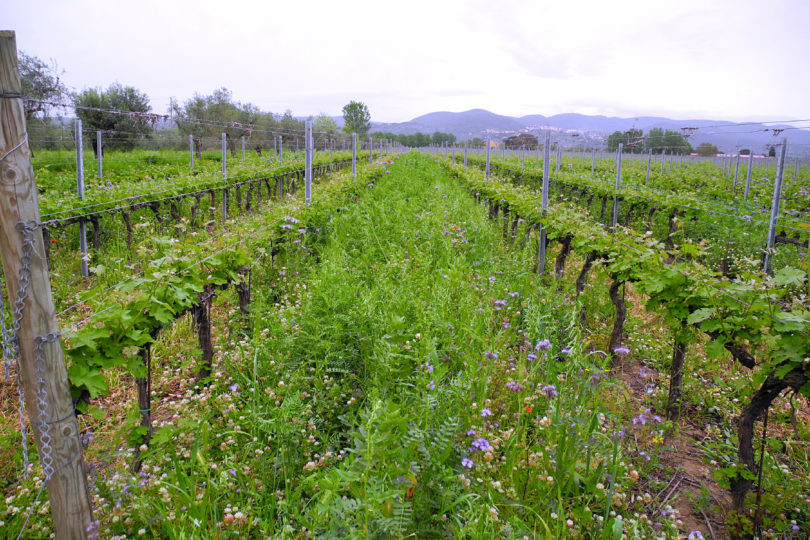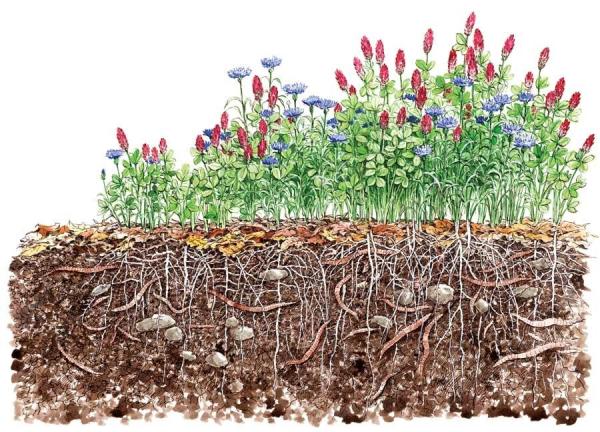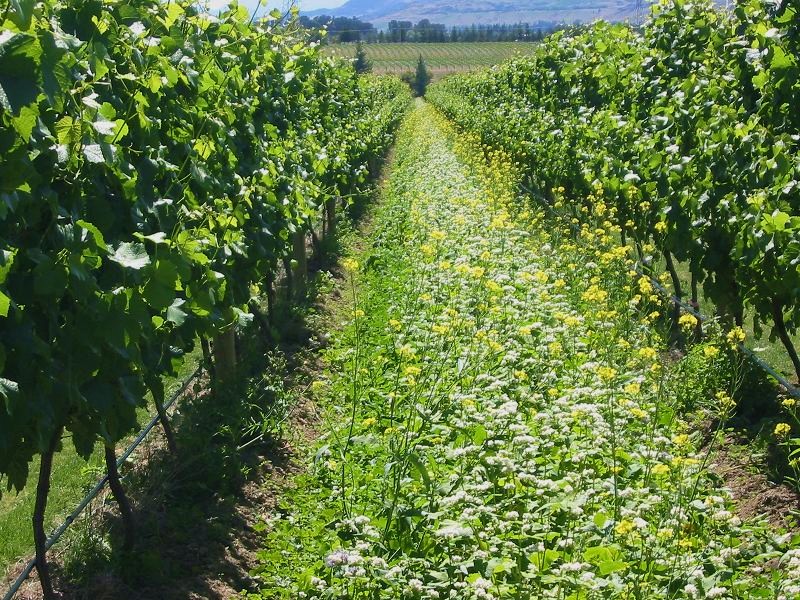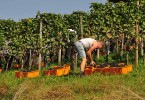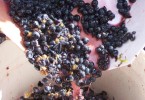Biological cultivation, but not only
The technique of cover crop is a practice that consists in the seeding and tilling of one or more herbal species and botanic families between a row and another. The more species, the more biodiversity!
This technique has ancient origins but it has been slowly abandoned in favour of chemical fertilizer because their higher return. As time went by people were more aware of the fact that this technique makes the soil poorer without reintegrate the useful nutritive substances; thus they decided to renew and use it again to cultivate the vine and all the crops in general, in particular, it is perfect for the biologic cultivation because it has a low environmental impact and it doesn’t depend on chemical substances.
Cover crop is fundamental, in fact, for the fertility of the soil and it safeguards the environment thanks to the contribution of organic substances and other nutritive elements in the seeds contained in the plants for the cover crop.
Advantages of cover crop for vineyards
- Improve soil fertility: cover crop enriches the soil of precious substances for its fertility and nutrition, for example, a cover crop of legumes enrich the soil of azote able to improve the quality of the white wines;
- Protection from soil erosion: if the cover crop coincides with the rainy months, it has the power to prevent soil erosion and its splashing;
- Protection of the aquifer: some seeds, like small grains are considered as a trap crop, able to hold nitrates that are going to contaminate the aquifer;
- Control of weed: some seeds chosen for the cover crop as the type Sage, impede the growing of other weed;
- Provide habitat for beneficial insects: cover crops can become the perfect habitat for many insects creating a useful diversification of the surrounding micro – organisms.
The choice of the right herbs for the cover crop
The seeding of the cover crop that can happen both in fall or spring, is an important moment and it is based on the desired goals. The right choice is essences that grow fast and give the maximum result in the period that goes from the seeding to the tilling.
Grains, like oat, barley and rye are highly fruitful, because they can cover high surfaces allowing a great airing of the soil. Deeper are, instead, the legumes (clover, sainfoin, tic bean) and are able to transfer in the surface the nutrients from the soil. The same is for the cruciferous (rapeseed, brassica, ravizzone) that are the perfect choice when we want to improve sandy soils or to make lighter claying ones. Also buckwheat is perfect for this aim, in fact is grows pretty fast and it impede to the weed to grow, or phacelia that, even if it lasts only 9 weeks, it has blue-violet flowers that attract bees.
After the seeding?
After seeding, there are different solutions to use the grass that has grown naturally between our rows. You should mow the biomass when you need grass for the mulch, a technique that improve fertility and reduce water wasting caused by evaporation. Otherwise, you can cut it to till the soil mixing it with the biomass in order to combine together the nutrients in the best way.
In addition, it is possible to control the release of the nutrients more or less quickly depending on the flowering: for a quick release it is better to quit the cover crop before the flowering, whereas if you want a slower release wait until after the flowering, in this moment, in fact, the fibres in the vegetal tissues are higher.

